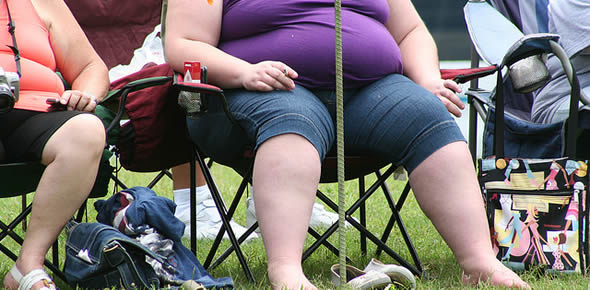
The Truth About Fat
The obesity epidemic sweeping across North America is one of the real plagues of the modern developed world. The epidemic is rendered even more concerning because it is for the most part a wholly preventable one. While other diseases have unknown causes, thus making any treatment at best guess work, obesity has well-known and documented causes and can be prevented or treated. So how have we as a society come to this state? The following post will seek to unravel some of the questions regarding what fat is, and how we can manage the intake of fat in our daily lives.
Were we to examine the fat in our bodies under the microscope, it would take the form of a large lipid (fat) droplet enclosed by a very thin plasma membrane. This structure allows an adipose (fat) cell to store vast amounts of energy, in the form of those very lipid droplets.
Before examining the role of fat in our bodies, we must first establish how fat is termed in health care and nutrition circle. Lipid, triglyceride, trans fat, saturated fat, unsaturated fat, Omega 3 or 6, adipose tissue are all terms used to describe the variety of different types of fat. The most important aspect to remember when discussing fat is that it is a category as varied and complex as any other in nutrition, however it an be broadly simplified into two sub-categories; “Good Fats” and “Bad Fats”.
Bad Fats
When you chomp down on that cheeseburger from the drive thru, it is broken down into its component parts in your stomach and intestines. Eventually the fat in that burger is transferred to the adipose tissue of your body. Adipose tissue is what we think of as fat in our society (think love handles, beer bellies etc.). So why does our bodies do this to us? Is it sadistic? No, the truth is that our bodies are attempting to save and protect us to ensure our survival as a species. Fat, stored in adipose tissue, is an energy powerhouse that allows us to survive between meals. When discussing why fat is stored in this manner in our bodies it is vital to remember that humans have been around for tens of thousands of years, and during a LOT of those years there was not a pizza joint on the corner to satisfy our cravings. For most of our history humans have had to hunt and fight for our meals, and fat was the method by which our bodies allowed us to survive when food was scarce.
Fat, or lipid, molecules are vastly complex structures. Scientists can and do devote their entire careers to studying the variations on the term “Fat”. Thus we will keep our focus more simple and state that whenever you hear terms like triglycerides, saturated fat and trans fat you can call them BAD FAT. The reason fats in this category are bad for you is that they are not essential to survival and in fact can cause contribute to serious conditions such as heart disease, stroke etc.
Unfortunately the sources of these bad fats tend to be some of the more popular foods in modern society. Deep-fried food, processed food and basically any type of fast food are all oozing (sometimes literally) with trans fats and saturated fats. The following table from the American Heart Association lists a few examples of bad fat sources.
| Fats That Raise Cholesterol | Sources | Examples |
| Dietary cholesterol | foods from animals | meats, egg yolks, dairy products, organ meats (heart, etc.), fish and poultry |
| Saturated fats | foods from animals | whole milk, cream, ice cream, whole-milk cheeses, butter, lard and meats |
| certain plant oils | palm, palm kernel and coconut oils, cocoa butter | |
| Trans fats | partially hydrogenated vegetable oils | cookies, crackers, cakes, French fries, fried onion rings, donuts |
I know, cutting out a lot of the foods in this table would lead to what I would term a “Why Bother Living Diet?” However, there are methods of creating healthy alternatives to some of the more classic foods that we eat. We will be adding some healthy alternative recipes in the future, which can be made to satiate even the most intense craving.
Good Fats
The category of “good fats” refers to those fats that are essential for maintaining proper homeostasis in the body. Proper homeostasis is vital for the well-being and general health of all of us. Whenever you see or hear terms such as Omega-3, Omega-6, monounsaturated, polyunsaturated etc. you can be sure that the fat you are ingesting will be good for your health. In general, good fats tend to do the opposite of what bad fats do. For instance, a bad fat will increase low density lipoproteins (LDLs-more on these in a later post), while good fats will decrease LDLs and increase high density lipoproteins (good cholesterol).
A very general trend you might have noticed while reading up on different information about nutrition is the concept of the good and the bad. Good cholesterol and bad cholesterol, good fat and bad fat, good carbs and bad carbs. In truth these terms are applied more to the SOURCES of our nutritional intake. We can get our fat intake from salmon cooked with a side of avocado or we can get our fat intake from a cheeseburger, the difference is that one source gives us quality essential fats and on gives us non-essential artery-clogging fat (I will let you decide which is which).
As stated at the beginning of this post this is a complicated issue facing our modern society. While the facts are clear, and the causes preventable, the obesity epidemic will be the scourge not only of our time but of our children’s as well. Knowledge is the major tool necessary to combat this growing problem, and it is our hope that this and subsequent posts will be of use to you in your daily life.
By: Dr. Korey Jay
References:
http://www.americanheart.org/presenter.jhtml?identifier=4582
Photo Credits: Tobyotter
 Did you like this article? Please consider
Did you like this article? Please consider  96 Queen Street
96 Queen Street
Leave a Reply